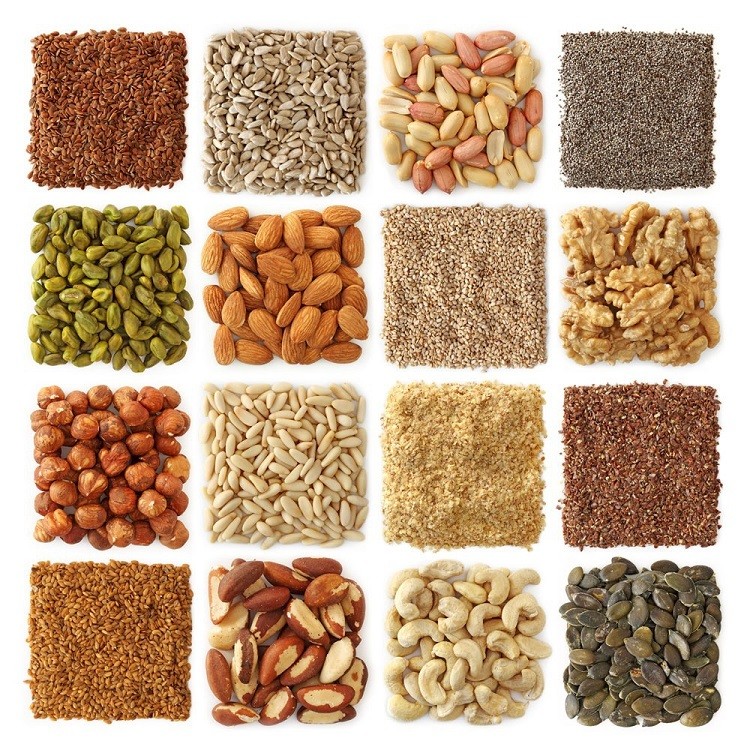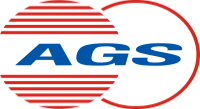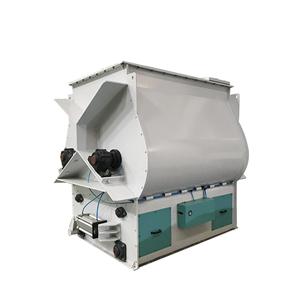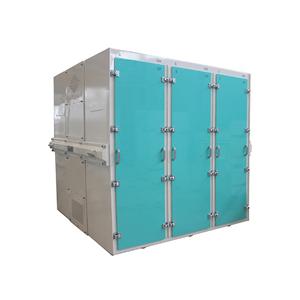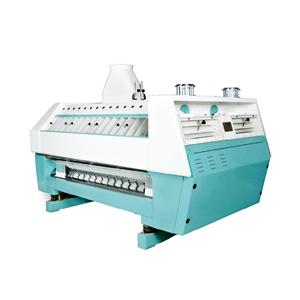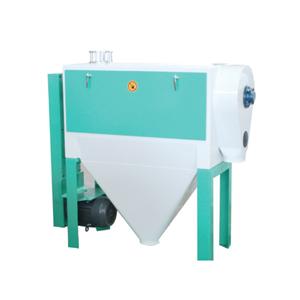FLOUR/GRAIN HANDLING EQUIPMENT OPTIONS OVERVIEW
There are many advantages in applying dilute phase pnuematic conveying in grain/wheat applications, such as dust free handling, robustness, simplicity of layout, ease of control. When a facility's requirements demand high process rates for flour/grain, the method of choice is typically dilute phase pnuematic conveying. But these systems cost more to operate when comparing on a Pound of Product delivered per Horsepower.
Which handling systems are more common for wheat/grain and flour?
Over the decades, technology and continuous improvements have altered the equipment for delivery of wheat/grain/flour in the USA. As such, the commonality of designs has increased. Today, here in the USA, the vast majority of wheat/grain/flour handling are very similar. We will discuss the merits of different handling systems while talking about wheat/grain/flour as the same. Typical grain/wheat/flour handling systems in the United States are mainly comprised of Dilute Phase Pnuematic Conveying Systems.
As a side note, if a particular product (i.e. grains, etc) has real degradation concerns, dilute phase pnuematic conveying is not the selection of choice. The generally higher velocities associated with transferring in a dilute phase manner do not lend themsleves to handling products in a gentle fashion. In these instances, the product is typicaly handled with a Dense Phase Pnuematic Conveying System or a Mechanical Conveying System.
Let's spend a short time on these systems:
Dense Phase Pnuematic Conveying Systems:
A dense phase concept is designed with the goal of a high solids-to-air ratio. This allows the product to move in the tubing at much, much slower velocities when compared to a dilute phase systems. As such, these systems are quite desirable when transferring a product that has degradation concerns (grains and similar applications) or, that may have abrasion concerns on the handling equipment. Utilizing a lower air velocity, these systems can transfer friable products very effectively with little degradation. Additonally, should a process have a blended product, dense phase systems can deliver the product while minimizing product segregation. The larger the particle size difference, the more likely a dense phase concept may be required.
If required, the dense phase concept systems allow for the same benefits that reside in dilute phase systems (see below: dust free, easy layout, robustness, etc).
Mechanical Conveying Systems:
Since we are covering the applications further down the food chain (i.e. food processing, baking, etc), mechanical conveying systems are not as common as pnuematic conveying systems. These systems are more common when degradation of the product is again a concern. Additionally, mechanical systems can be more common when the product can be abrasive to the handling equipment. Mechanical systems typically consist of:
• Drag Conveyors
• Chain Conveyors
• Screw Conveyors
• Bucket Elevators
• Belt Conveyors
Let us now go back to the more common Dilute Phase Conveying Systems.
Dilute Phase Pnuematic Conveying references the air-to-material ratio when transferring. Generally speaking, this is a low product-to-air ratio design that utilizes higher air velocities (and lower volumes of product) to transfer the product from one point to another within a facility. There are (2) types of Dilute Phase Pnuematic
Conveying styles:
• Pressure
• Vacuum
Generally speaking, Pressure systems provide better transfer efficiencies over longer distances. In a given application, Vacuum Systems typically will not be able to match the throughput of a Pressure System with all things being equal. However, Vacuum Systems are considered "cleaner" as the motive air is not delivered through the blower and into the product stream like a pressure system.
There are many advantages in applying dilute phase pnuematic conveying in grain/wheat applications. Below are some of the primary advantages:
• Dust free handling: With the material being handled in a closed system comprised of tubing (or, piping) from one point to another, these systems are virtually dust free when designed properly.
• Ease/Simplicity of layout: The layout of these systems is quite simple given the fact that the tubing is flexible in terms of final layout design. Care must be taken in order to minimize the distances (and turns, or elbows) of the systems.
• Robustness (Maintenance & Repair): Dilute Phase Pnuematic Conveying Systems are typically extrememly robust and can consistantly provide years of continuous, trouble-free operations. We have routinely witnessed system operating in their 4th decade with little maintenance & repair.
• Distribution: Pnuematic Conveying Systems alllow for a multitude of layout possibilities.
-Materials can be transferred from one point to multiple destinations.
– Materials can be trasnferred from multiple starting points to a singal destination.
– More complex systems can trasnfer from multiple starting oint to multiple destinations
• Ease of Control/Automation: Either Control Relay Logic or PLC (Programmble Logic Controllers) driven Controls Systems are common. The more complex the system, the more common you will see PLC drvien systems due to their robutsness and ease of operation.
• Security: The materials are received and transferred in closed systems (Silos, Tubing, Filter Receivers, Scale Hoppers, etc).
Of course, as with all systems, there are disadvantages when utilizing Dilute Phase Pnuematic Conveying for Wheat/Grain transport. Some of these disadvantages are:
• Inefficient Material Transfer: The Horsepower requirements are usually higher than mechanical systems when given the same operational parameters. Simply put, these systems cost more to operate when comparing on a Pound of Product delivered per Horespower.
• Explosion Protection/Safety Considerations: This key component is being reviewed and required per safety guidelines on a more continual basis than in the past. These safety systems add cost to the system.
• Distance Limited: Dilute Phase Pnuematic Conveyingis more limited when required to trasnfer products over long distances. Generally speaking, systems are typically under several hundred feet in order maximize throughput. A simple rule of thumb is to remember, "Distance and Turns (i.e. Elbows) can and will drastically diminish rate for a given application"
Although we have covered the general advantages/disadvantages for Dilute Phase Systems, it is important to note that the details of the design, layout, and implementation of any system requires the partnering with a qualified vendor. This person needs to be knowledgeable in many, many parameters in material handling as any single mistake or design issue can produce extremely negative process results. Some of the important parameters this person needs to bring to your team:
• Product knowledge: Differing flour types (i.e. hard/soft wheat, semolina, pastry flour, etc) can require different conveying practices even within a single conveying "type" (dilute phase in this case)
• Equipment Layout: Do not overlook the importance of partnering with an outfit that understands the importance of layout design. Due to existing plant layout parameters, a qualified partner will understand the process requirements and conditions and can apply GMP (good manufacturing practices) to our process
• Experience: Knowledge and consistent design practices usually come from years of experience in the field. Often a small variable can have a huge effect on the performance of a system. An expereinced partner can assist you with overcoming these obstacles.
• Proper Componentry Design: Let's face it. Your system will only be as strong as your weakest link. Each individual component in a system provides a known, desired output. Attention to detail at the component level ensures the viability of the overall system's design.
• Understanding the Bigger Picture: Does your partner (supplier) understand your future growth needs? Have you considered different approaches based on this information? If you invest captial in the equipment, have you ensured that your system will be able to produce for you at your future desired capacities without over burdening your existing cash flow outlays? These are all questions that a qualified supplier/partner can help you with.
• Understanding the general intricacies of your other pieces of equipment: As a supplier that seeks continuous improvements in our offerings, we have found it to be very beneficial to get to know the equipment that is not in our scope of supply. Having a better understanding of the equipment outside our scope of supply allows us to better see your "whole process". This can allow your partner to assist on small but important things like:
– Where is the best place to discharge a material batch into a dry blender or a dough mixer?
– Do we need to slow down or increase the rate of a discharge to improve your product?
– What are the issues being faced with external factors (i.e is the process area air conditioned? Are the operations continuous? Etc.)
– What are the facility's expectation for cleaning and upkeep?
